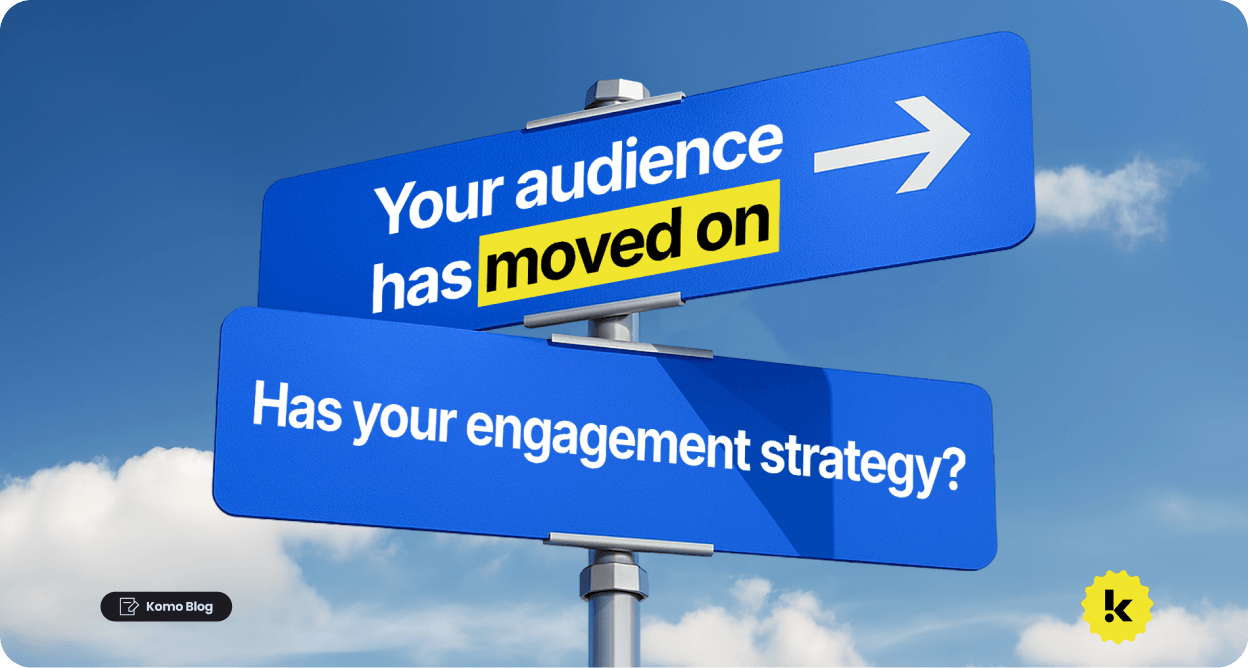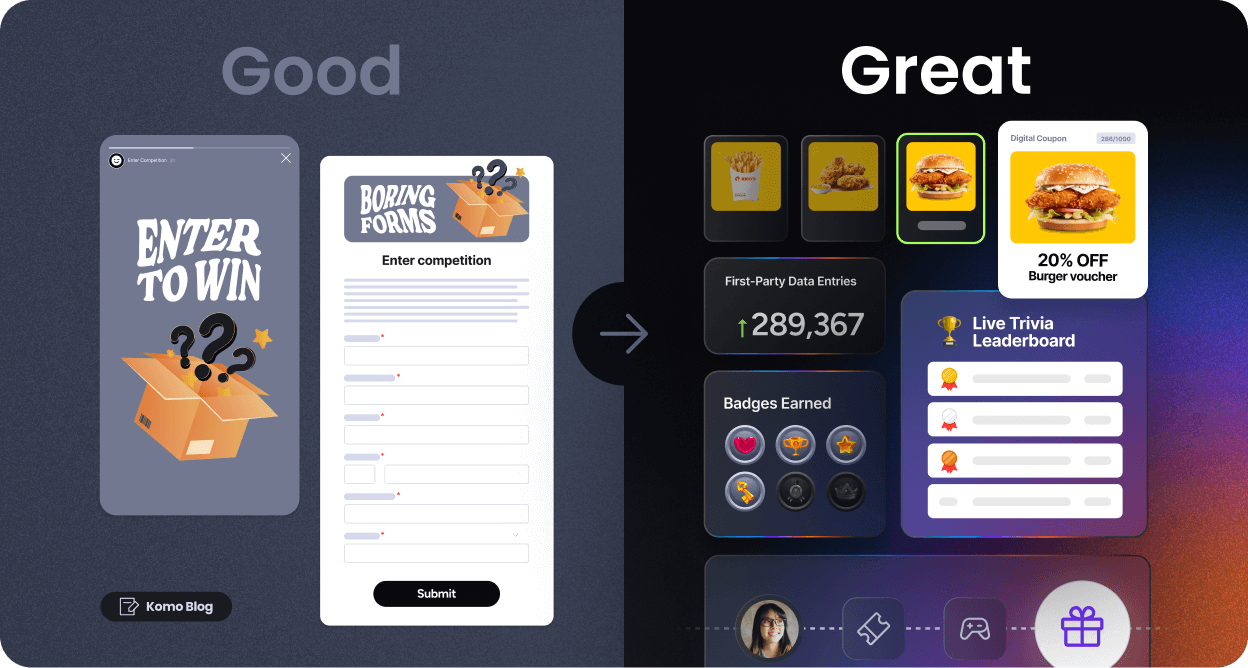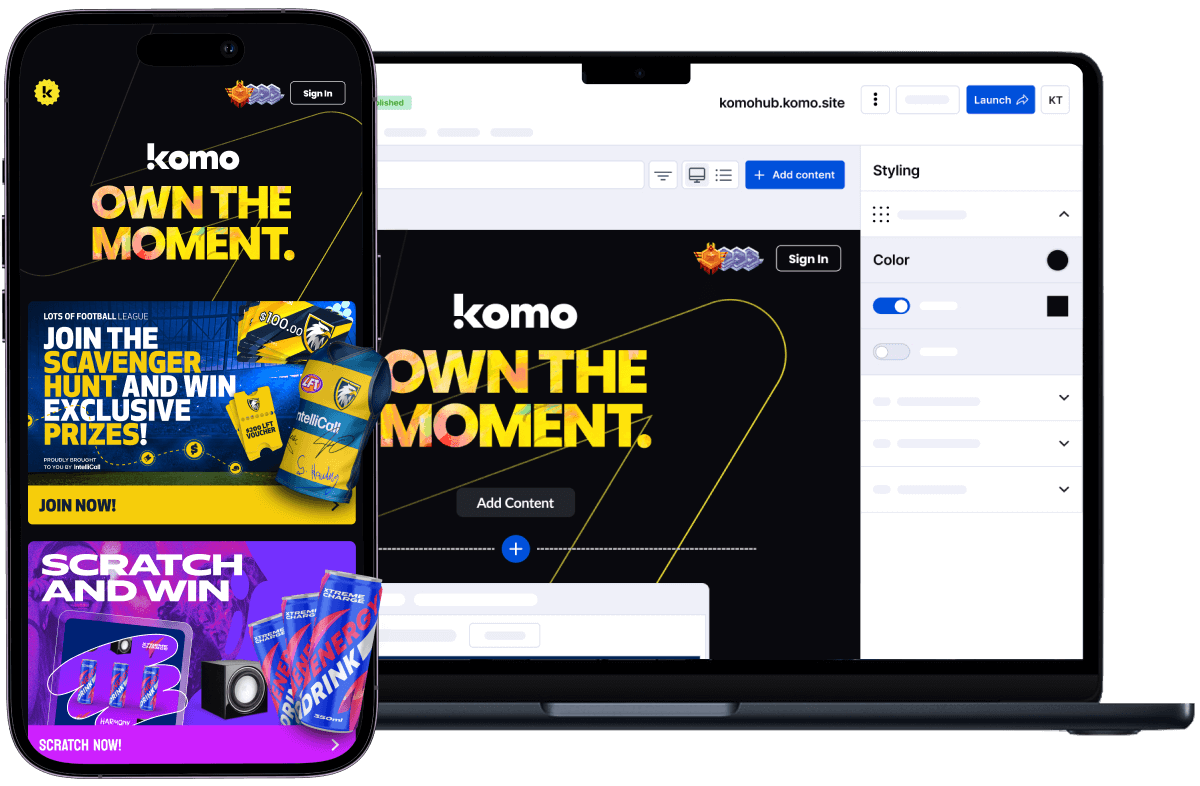You're running polls, quizzes, contests, and surveys. People are participating. The engagement numbers look good.
But where does the data go?
Most teams are generating customer interactions without capturing the intelligence that makes those interactions valuable. You're measuring clicks and conversions while missing the preferences, motivations, and behaviors that actually drive loyalty.
If you're not learning from every engagement, you're flying blind.
The data visibility problem
Let's be honest about what happens after most campaigns end:
The quiz gets 500 responses → Results get exported to a spreadsheet → Someone creates a summary slide → The insights disappear into a folder somewhere
Next quarter, you're back to making educated guesses about what your audience wants because the intelligence from last quarter isn't accessible, actionable, or integrated into your strategy.
You're generating data, but you're not building knowledge.
The zero-party data gap
81% of companies with loyalty programs say they use them to collect customer feedback. Yet most teams struggle to connect engagement data to customer profiles in ways that actually improve personalization.
You might know someone clicked your email, attended your webinar, and downloaded your guide. But do you know why they engaged? What they're trying to accomplish? What would make them more likely to engage again?
Traditional analytics tell you what happened. They rarely tell you why it happened or what to do next.
When engagement doesn't equal intelligence
Most engagement tools are built for participation, not learning.
Your survey platform captures responses but doesn't feed your CRM. Your quiz tool generates leads but doesn't enrich customer profiles. Your event app tracks attendance but doesn't inform your email personalization.
Every interaction is a missed opportunity to understand your customers better.
Meanwhile, only 34% of consumers trust brands to use their data responsibly. Yet many are willing to share preferences and feedback—if there's clear, immediate value in return.
The problem isn't getting people to share information. It's capturing and using that information in ways that benefit both sides.
The personalization paradox
88% of practitioners rank personalization as a top loyalty driver. Yet most teams are personalizing with incomplete data.
You're segmenting by demographics and purchase history while ignoring the rich behavioral and preference data from every quiz, poll, and interactive experience you run. You're treating engagement like a vanity metric instead of an intelligence-gathering opportunity.
Think about it: when someone spends five minutes on your product configurator, that's not just "engagement"—it's insight into their priorities, budget, and decision-making process. When they participate in your brand personality quiz, they're literally telling you how to communicate with them.
But if that intelligence doesn't flow into your customer profiles, it might as well not exist.
The fragmented intelligence problem
68% of marketers deal with data silos that make it nearly impossible to connect customer behaviors across touchpoints.
Your email platform knows open rates. Your website knows page views. Your survey tool knows responses. Your event platform knows attendance. But none of them know the full story.
Meanwhile, your customers are experiencing one continuous relationship with your brand. They expect you to remember their preferences from the quiz they took last month when they attend your webinar this month.
When your data is fragmented, your personalization feels random.
The third-party data decline
With cookie deprecation and privacy regulations tightening, the data sources most teams have relied on are disappearing.
Yet many brands are still optimizing for impressions and reach instead of building direct relationships that generate first-party and zero-party data.
Every interactive experience is an opportunity to replace third-party assumptions with first-party knowledge. But only if you're designed to capture and use that intelligence systematically.
The insight-to-action gap
Even teams that capture engagement data often struggle to turn insights into action.
52% of marketers struggle to use data effectively to generate actionable insights. They have spreadsheets full of responses but no clear path from "interesting finding" to "improved experience."
The quiz revealed that 60% of your audience prefers video content. Now what? The poll showed strong interest in sustainability features. How does that change your messaging? The survey identified three distinct customer personas. How do you operationalize that knowledge?
Data without action is just digital hoarding.
The competitive intelligence advantage
While you're measuring surface-level engagement, your competitors who've figured out systematic data capture are building competitive moats.
They know their customers' preferences in detail. They can predict behavior patterns. They personalize experiences in real-time based on cumulative intelligence rather than single interactions.
Every quarter you spend optimizing for clicks instead of insights is a quarter they're building deeper customer knowledge.
The retention reality
Existing customers spend 67% more than new ones—but only if you know how to nurture them. Only if you remember their preferences. Only if each interaction builds on the last.
Most teams are leaving retention on the table because they're not learning from the customers they already have. You're focused on acquisition tactics while ignoring the intelligence that drives loyalty from your existing base.
The scale problem
As your audience grows, guessing gets exponentially harder.
What worked for 500 customers might not work for 5,000. Broad segments become insufficient when you need to personalize at scale. Generic messaging becomes white noise when customers expect relevance.
The only way to scale personalization is to scale intelligence gathering. And that means every engagement needs to teach you something actionable about each participant.
The wasted interaction cost
Every time someone engages with your content without you learning something valuable about them, you've wasted more than the interaction cost.
You've wasted the opportunity to:
- Understand their motivations and preferences
- Segment them more precisely for future communications
- Personalize their next experience based on revealed interests
- Build a complete profile that informs retention strategies
- Turn engagement into emotional connection through relevance
These missed opportunities compound over time.
The real question
If you're running engaging experiences but not systematically capturing and using the insights they generate, the question isn't whether your engagement strategy is working.
The question is: how much loyalty are you leaving on the table?
What would change if every poll revealed actionable preferences? If every quiz enriched customer profiles automatically? If every interaction taught you something that made the next interaction more relevant?
Some teams already work this way. They've turned engagement into an intelligence engine.
The difference shows up not just in their data quality, but in their customer lifetime value.
What's possible
Ready to see how your current data capture compares to teams who've turned every interaction into insight?
- Take the 2-minute Engagement Maturity Assessment - Discover how much intelligence you're missing from your current engagements
- See How High-Performing Teams Evolved - Real examples of companies that transformed engagement into systematic learning
- Engagement Maturity Model - Understand what it takes to capture actionable insights from every interaction
You're already creating the interactions.
The question is: are you capturing the intelligence?
Ready to transform your engagement strategy from clicks to actionable intelligence? Take our 2-minute Engagement Maturity Assessment to unlock the full potential of your customer interactions.



.png)
